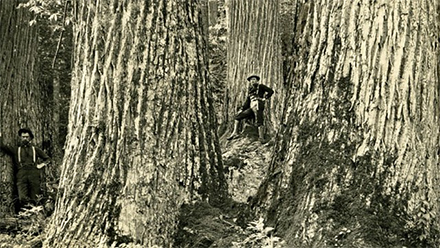Look at anything made from trees like a ream of paper, a cardboard box, lumber and it’s probably stamped with the logo of the Forest Stewardship Council (FSC) or an equivalent organization. These non-profits certify that forests are managed sustainably, and one common requirement is no genetically modified (GM) trees. Source: Science Mag
Researchers say that ban hinders research and should change. The technology, they argue, has important potential to remedy many pressing problems facing forests.
“Having this restriction doesn’t make any sense,” says Sofia Valenzuela, a biochemist at the University of Concepción in Chile.
Certification of forest sustainability began to take off in the 1990s. Environmental groups, concerned about tropical deforestation, wanted to encourage consumers to buy products from sustainably managed forests.
FSC, headquartered in Bonn, Germany, bases its certifications on a range of social, environmental, and economic factors. Together, FSC and a similar effort, the Programme for the Endorsement of Forest Certification (PEFC), in Geneva, Switzerland, have certified about 440 million hectares around the world.
The organizations say that since their inception, they have banned GM trees as a precaution against uncertain environmental risks. Stefan Salvador, FSC’s director of policy operations, says the ban also reflects “fundamental skepticism” about the technology, including concerns that it will intensify production in tree plantations.
Scientists have long countered that hundreds of field trials and other research over the years since have proved the technology as safe as traditional breeding.
A big problem with the ban is that managers of certified forests will not be able to plant GM trees that could, for example, better resist pests and drought, says Steven Strauss, a forest biotechnologist at Oregon State University in Corvallis, a co-author of the letter and a petition.
He works with forestry companies in South Africa and Brazil, where climate change and a proliferation of pests are harming plantations.
“They would love to be able to use [genetic engineering] as one more tool to help in their ever-accelerating struggles to grow wood in an economic and sustainable way.”
Engineered trees might also play a role in restoring natural forests. The American chestnut, which was wiped out in the 20th century by an introduced pathogen, has been engineered to resist the blight. But half of the forests where it used to exist are certified as sustainably managed and so it couldn’t be replanted there, Strauss says.
Co-author Wout Boerjan, a molecular geneticist at VIB, a research institute in Flanders, Belgium, works to develop genetically engineer trees that can be turned into biofuels or paper using less energy and chemicals.
He worries these trees will be less appealing if they can’t be grown in certified forests.
“A pulp and paper company wants to have the FSC label,” he says. “Even if we have better trees.”
Trees engineered to grow faster could also reduce pressure on harvesting from natural forests, he says.
Strauss says that the increase in the area of certified forests makes it harder to do field trials of GM trees, because fewer companies are investing in this research. About 15 years ago, Strauss used genetic engineering to create cottonwood trees that resist pests and herbicides. When his industry partners had their forests certified, “the interest in research went away.”
Now, his research modifying pines and eucalypts is done in university-owned forests, and the trials cost more and suffer from lack of industry staff and expertise, Strauss says.
Heather Coleman, a tree biotechnologist at Syracuse University in New York and coauthor of the letter, says the ban unfairly besmirches the reputation of trees modified by genetic engineering or gene editing.
“There is a perception is that it’s bad,” she says. “That there’s something wrong with gene editing.”
Thorsten Arndt, a spokesperson for PEFC, says the certification requirements are reviewed every five years, with the next update scheduled to be completed in 2023.
“Anyone who wants to change the standard to say we’d like to have GMOs can participate in our process.”








